Baengnokdam Lake (한라산 백록담)
.0M 2022-07-13
Topyeong-dong, Seogwipo-si, Jejudo
+82-64-713-9950
Baengnokdam is a crater lake that sits on top of Hallasan Mountain at the center of Jeju Island. It spans 3 kilometers in circumference and 500 meters in diameter, and is surrounded by approximately 360 parasitic cones. At the peak, visitors can feel like floating on clouds.
Yeongsil Trail (Hallasan National Park) (한라산 영실)
5.0Km 2024-03-11
246, Yeongsil-ro, Seogwipo-si, Jeju-do
+82-64-713-9950
Yeongsil Trail is renowned as the shortest yet the best one for its beautiful scenery among those of Hallasan Mountain. It is 5.8 kilometers and takes approximately 2 hour and 30 minutes to get to the destination. Starting from Yeongsil Rest Area, an uphill path emerges along steep mountain ridges to reach the Nambyeok Watershed. With its steep and flat parts, the hike is easy enough for children. It's a wonderful way to appreciate the lush forest and beautiful scenery.
Seogwipo Healing Forest (서귀포 치유의 숲)
5.9Km 2024-11-21
2271, Sallongnam-ro, Seogwipo, Jeju-do
+82-64-760-3067
Seogwipo Healing Forest is the ideal place to reflect on yourself and take time for healing. It is one of the best natural attractions in Jeju, where you are surrounded by nature and can appreciate the diverse charms of the forest. Located 320-760 meters above sea level, there is a diverse range of vegetation, including subtropical, temperate, and boreal forests. In particular, several cypress forests with trees averaging over 60 years of age can be found here, making them among the oldest of their kind in Korea. In addition, Seogwipo Healing Forest is a unique recreational and healing space, located close to a healthcare town, enabling collaborations with the medical and tourism sectors. Here, specialists operate forest therapy programs by leveraging various environmental elements of the forest to boost immunity and promote health. People who live busy lives without time for themselves can enjoy a healing tour surrounded by abundant phytoncide, sunlight, wind, and beautiful sceneries.
Gosalli Forest Trail (고살리 숲길)
6.3Km 2020-07-09
Namwon-eup, Seogwipo-si, Jeju-do
+82-64-733-8009
The Gosalli Forest Trail runs along a stream in Harye 2-ri, Namwon-eup on the southern part of Jeju Island. The area was recognized by the Ministry of Environment in 2013 for their outstanding efforts in preserving and protecting the local ecology. The forest trail passes through one of Jeju's beautiful forested areas, and is perfect for peaceful leisure walks, being less known among tourists. To limit the amount of damage to the natural environment, the trails are unrefined, so guests are reminded to tread carefully.
Jeju Island Special Tourist Zone (제주도 관광특구)
6.3Km 2025-05-20
Jeju-do
+82-64-740-6000
Located to the southwest of the Korean Peninsula, the island of Jeju is Korea's largest tourist destination. The entire island has been designated as a special tourist zone, and it's easy to see why: there is hardly any spot on the island that is not photogenic. Unlike mainland Korea, which has a temperate climate, Jeju boasts a climate that is closer to subtropical. Hallasan Mountain, lying at the center of the island, is surrounded by 368 parasitic cones, known as "Oreum." Eleven beaches have been designated as tourist beaches, but including those that are not officially designated, the island features nearly thirty beaches in total. Famous beaches include Iho Tewoo Beach, Samyang Beach, Hyeopjae Beach, Geumneung Beach, and Gwakji Beach. Jeju's renowned Olle Trails, a system of hiking paths, span a total length of 425 kilometers and would take about fifteen days to complete in their entirety.
Donnaeko Resort (Wonangpokpo Falls) (돈내코(원앙폭포))
6.3Km 2025-01-14
137, Donnaeko-ro, Seogwipo-si, Jeju-do
+82-64-710-6920
With a valley creek hidden by lush green forest leading to a 5-meter-high waterfall falling into a small pool of water, Donnaeko Resort is like a small paradise hidden in nature. The waters, flowing down from Hallasan Mountain, are clear and icy cold even during the hot summer season. The resort's magnificent views and natural pool make the area a popular vacation destination.
Hallasan Mountain [National Geopark] (한라산 (제주도 국가지질공원))
6.5Km 2024-12-03
2070-61 1100-ro, Jeju-si, Jeju-do
+82-64-710-3945
Hallasan Mountain stands proudly at the center of Jeju Island and is perhaps the island’s most memorable landmark. Also called Yeongjusan Mountain, meaning "mountain high enough to pull the galaxy," Hallasan Mountain is widely known by scientists for its geological value. Designated as a national park in 1970, there are 368 parasitic cones called "oreum" (Jeju dialect meaning peak) around the main mountain.
Hallasan Mountain is famous for its vertical ecosystem of plants that results from the varying temperatures along the mountainside. Over 1,800 kinds of plants and 4,000 species of animals (3,300 species of insects) have been identified; to explore the mountain's treasures, simply follow one of the well-developed hiking trails.
Hallasan Mountain Trekking (한라산 트레킹)
6.5Km 2020-06-25
2070-61, 1100-ro, Jeju-si, Jeju-do
+82-64-740-6000
Situated on the southern tip of the Korean Peninsula, Hallasan is 1,950 meters in x_height and is the highest mountain in South Korea. Formed from volcanic activity, the mountain is a dormant volcano made mostly of basalt. Home to the magnificent Baekrokdam (lake-filled crater), the mountainside is covered with alpine flora and lush trees.
The mountain is characterized by majestic cliffs, steep slopes, interesting rock formations, and, in particular, myriads of colorful azaleas. There are over 360 small mountains (uniquely-shaped volcanic mountains called “Oreum” in Jeju dialect) surrounding Halla Mountain that offer new delights to visitors with the coming of each new season. Along with Hallasan, the oreums were officially named the Hallasan Natural Protection Area (Natural Monument No.12) in 1966.
There are six hiking trails along Hallasan. Seongpanak Trail on the east and Gwaneumsa Trail in the north go all the way up to the summit (Baekrokdam). Those looking for a less rigorous hike are advised to take the shorter trails reaching midway up the mountain. All trails are relatively short (less than 10 kilometers) and can be hiked in less than a day. Visitors are advised, however, to start early in the morning if planning on hiking up to the summit and to check official operating hours, as some trails are only open during certain hours of the day. Keep reading for information on some of the most popular trails.
* Gwaneumsa Trail (North)—Summit Trail
Gwaneumsa Trail offers hikers the best view of Hallasan’s deep valleys and stunning terrain. Midway along the trail is Guringul (a lava cave) and Tamna Valley. Tamna Valley is especially beautiful during the fall when the leaves are changing and during the winter when the entire area lays under a dusting of snow.
* Seongpanak Trail (East)—Summit Trail
This relatively long, gently sloping trail is perfect for beginners. Lush broadleaf trees give shade from the beating sun and in spring the azaleas bloom and turn the mountainside into a dazzling array of color.
* Eorimok Trail (Northwest)
This short trail is another relatively easy trail for beginners. In spring, the nearby meadows are adorned with red royal azaleas. From the stone pathway to Mansedongsan visitors can catch a breathtaking panoramic view of the countryside and the island’s signature Oreums.
* Yeongsil Trail (Southwest)
As the shortest trail in Hallasan, this trail boasts Yeongsilgiam (a spectacular cliff with series of unusual rock formations). It is covered with azaleas and royal azaleas in spring and vibrant autumn foliage starting in October.
Seogwipo Recreational Forest (서귀포자연휴양림)
7.5Km 2020-08-13
882, 1100-ro, Seogwipo-si, Jeju-do
+82-64-738-4544
Seogwipo Recreational Forest is Korea’s southernmost recreational park that serves as an excellent nature getaway by preserving the mountain’s forest environment and ecosystem while minimalizing manmade structures as much as possible. The park is located approximately 700 meters above sea level, and is 10 °C lower in average temperature compared to that of Seogwipo’s downtown, providing the ideal condition to enjoy forest bathing and camping from spring to fall. The park is easily accessible by car, thanks to the paved road from the mountain’s foothills all the way up to the park’s entrance. It takes about 30 minutes by car from Seogwipo’s downtown to the recreational park. The park is densely packed with trees and the air is filled with the refreshing forest scent, and even has a pebble walking trail suitable for a barefoot massage. The forest is equipped with amenities such as a mountain cottage, forest bathing site, campfire site, cooking area, and auto-camping site. Although the amenities serve to provide visitors’ convenience, they are minimized so as to prevent damage to the forest’s natural environment.
Gwaneumsa Temple (Jeju) (관음사(제주))
9.0Km 2025-04-01
660 Sallokbuk-ro, Jeju-si, Jeju-do
Gwaneumsa Temple is a historic Buddhist temple located about 650m up on the slopes of Hallasan Mountain. The road leading to the temple is exceptionally scenic, framed by cedar trees and adorned vibrant with chrysanthemum flowers, creating a striking yellow path. The temple grounds host siginificant structures such as the Cheonwangmun Gate, Daeungjeon Hall, and the Gwaneumgul Cave. For visitor convenience, the complex includes a café and a restaurant specializing in Buddhist temple cuisine. Additionally, the temple offers a templestay program, providing guests with a unique opportunity to engage in rest and meditation, embracing the tranquil solitude of the temple environment.

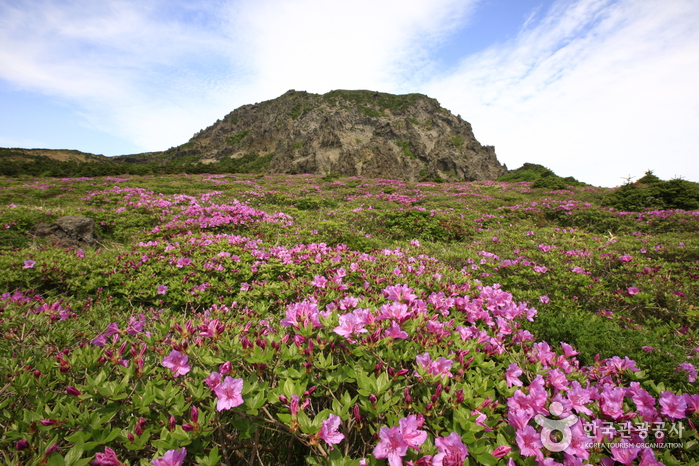

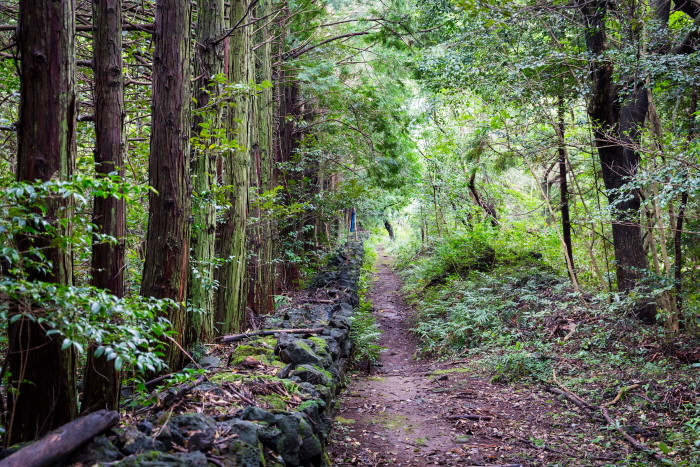
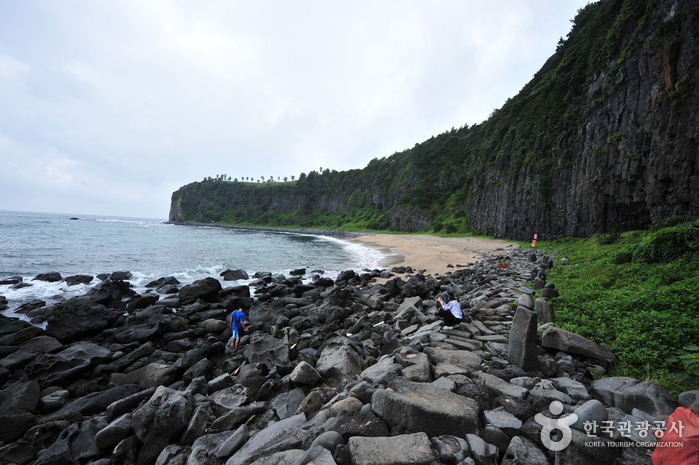
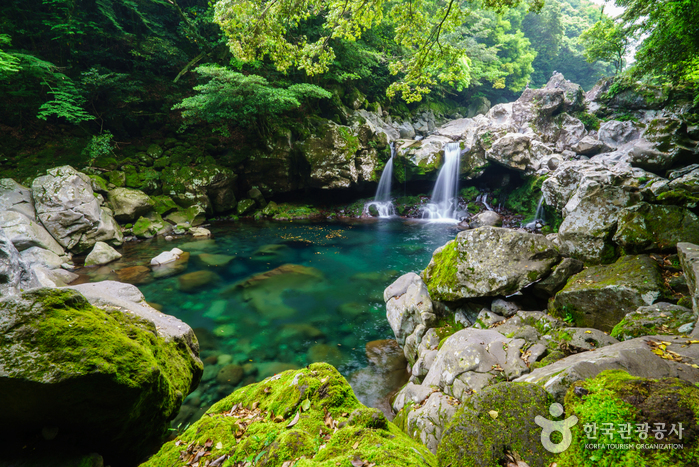
![Hallasan Mountain [National Geopark] (한라산 (제주도 국가지질공원))](http://tong.visitkorea.or.kr/cms/resource/98/2870098_image2_1.jpg)
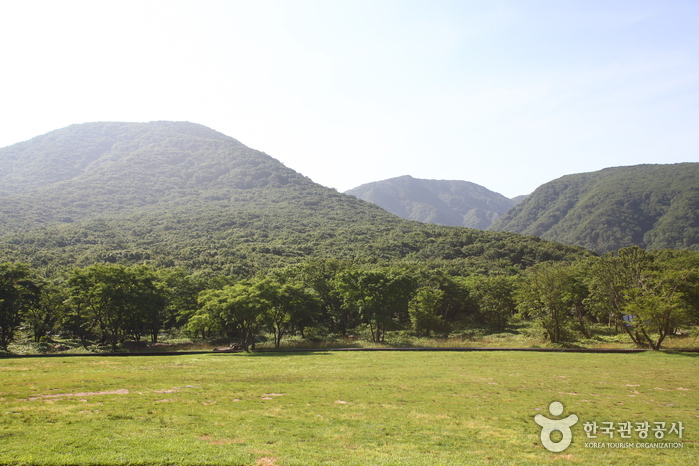
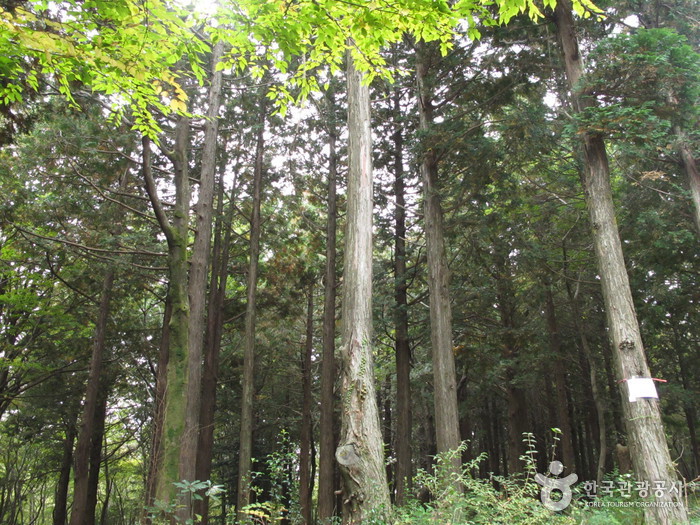
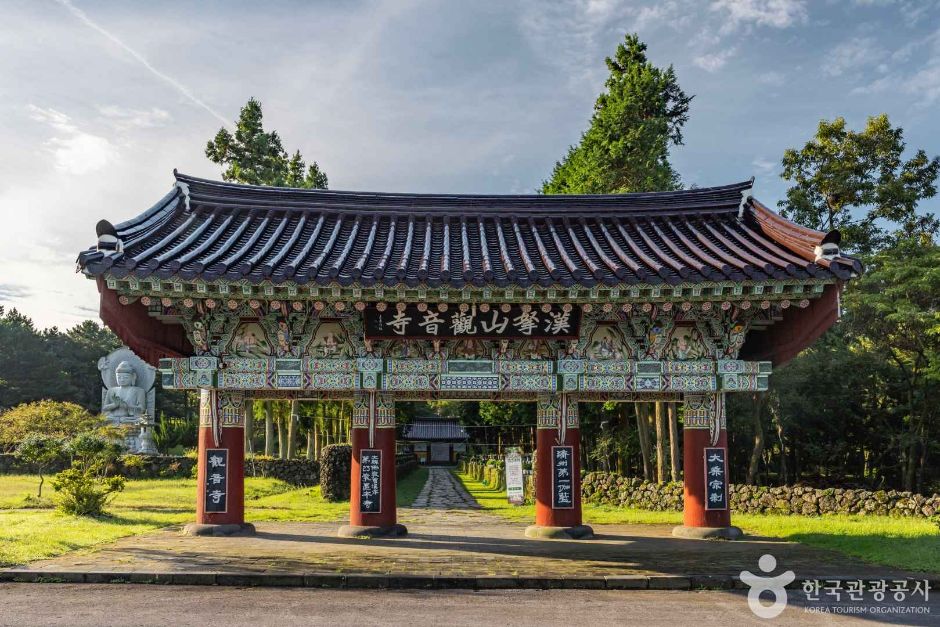
 English
English
 한국어
한국어 日本語
日本語 中文(简体)
中文(简体) Deutsch
Deutsch Français
Français Español
Español Русский
Русский